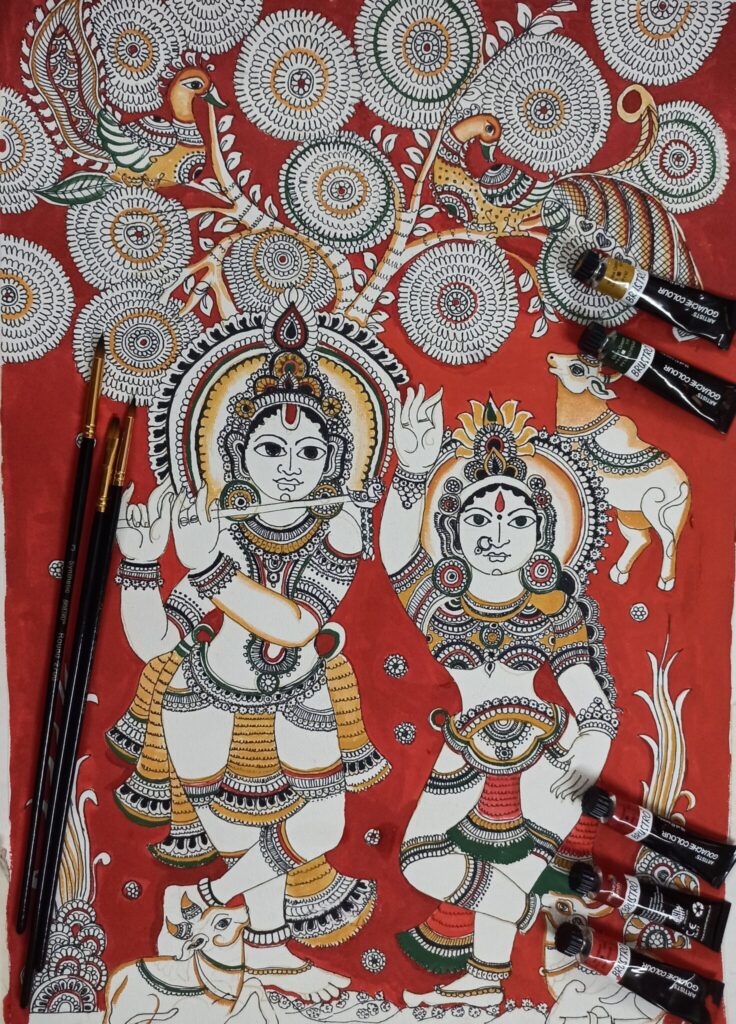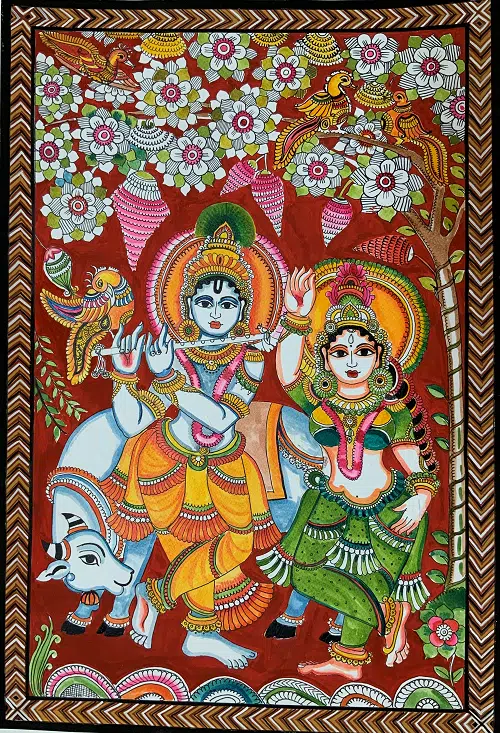Kalamkari Art is a beautiful and ancient Indian form of hand-painting or block-printing on fabric, known for its intricate detailing and use of natural dyes. The word Kalamkari comes from two Persian words:
- “Kalam” meaning pen
- “Kari” meaning craftsmanship
So, Kalamkari literally means “pen craft”.

🎨 Origins & History
- Dates back over 3000 years.
- Primarily practiced in Andhra Pradesh and Telangana, especially in towns like Srikalahasti and Machilipatnam.
- Was originally used to narrate stories from epics like the Ramayana and Mahabharata on cloth scrolls, often for temple backdrops.

✍️ Two Main Styles
- Srikalahasti Style
- Entirely hand-drawn with a bamboo or date-palm pen.
- More narrative and used for depicting mythological stories.
- Artists have full creative freedom.
- Machilipatnam Style
- Uses block-printing with wooden stamps.
- Features more floral and geometric patterns, and is slightly more commercial.
🌱 Materials & Process
- Uses natural dyes extracted from plants, roots, bark, and minerals.
- Cotton or silk cloth is treated with milk and myrobalan to help absorb colors.
- Designs are drawn, dyed, washed, dried, and sometimes repeated over 23 steps.
📌 Popular Themes
- Hindu deities like Krishna, Rama, Shiva, Durga
- Motifs like peacocks, lotuses, trees of life, and paisleys
- Puranic legends and epics

🧵 Modern Usage
- Kalamkari is seen in sarees, dupattas, stoles, home décor (cushions, curtains, wall hangings), and even in contemporary fashion.
- Supported by various artisan cooperatives and recognized as a Geographical Indication (GI) product.
Would you like to know how to identify authentic Kalamkari, or maybe where to buy it or learn it?
